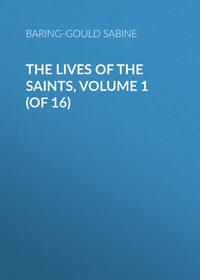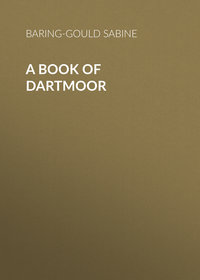
A Book of the West. Volume I Devon
Bere Ferrers has a fine church, with some old glass in it and a very singular font, that looks almost as if it had been constructed out of a still earlier capital. Bere Alston was once a borough, returning two members.
On the east side of Plymouth is the interesting Plympton S. Mary, with a noble church; Plympton S. Maurice, with a fine modern screen, and the remains of a castle. Here is the old grammar school where Sir Joshua Reynolds received his instruction, and here also is the house in which he was born. He gave his own portrait to the town hall of the little place – for it also was a borough, and, to the lasting disgrace of Plympton be it recorded, the municipality sold it. The old house of Boringdon has a fine hall. The house has twice been altered, and the last alterations are incongruous. One half of the house has been pulled down. Above it is a well-preserved camp. Ermington Church deserves a visit; it has been well restored. It has a bold post-Reformation screen. Holbeton has also been restored in excellent taste. On Revelstoke a vast amount of money has been lavished unsatisfactorily. Near Cornwood station is Fardell, an old mansion of Sir Walter Raleigh, with a chapel.
The same station serves for the Awns and Dendles cascade, and for a visit to the Stall Moor with its long stone row, also the more than two-mile-long row, leading from the Staldon circle, and the old blowing-houses on the Yealm at Yealm Steps. There the old moulds for the tin lie among the ruins of two of these houses, one above the steps, the other below. A further excursion may be made into the Erme valley, with its numerous prehistoric remains, and to the blowing-house at the junction of the Hook Lake. This is comparatively late, as there is a wheel-pit.
North of Plymouth interesting excursions may be made to the Dewerstone, perhaps the finest bit of rock scenery on Dartmoor, or rather at its edge, where the so-called Plym bursts forth from its moorland cradle. The summit of the Dewerstone has been fortified by a double line of walls. A walk thence up the river will take a visitor into some wild country. He will pass Legis Tor with its hut circles in very fair preservation, Ditsworthy Warren, and at Drizzlecombe, coming in from the north, he will see avenues of stones and menhirs and the Giant's Grave, a large cairn, and a well-preserved kistvaen. By the stream bed below is a blowing-house with its tin moulds. Shavercombe stream comes down on the right, and there may be found traces of the slate that overlay the granite, much altered by heat. From Trowlesworthy Warren a wall, fallen, extends, in connection with numerous hut circles, as far as the Yealm. For what purpose it was erected, unless it were a tribal boundary, it is impossible to discover.
A visitor to the Dewerstone should not fail to descend through the wood to the Meavy river, and follow it down to Shaugh Bridge.
An interesting house is Old Newnham, the ancient seat of the Strode family.
Hard by is Peacock Bridge. Here a fight took place, according to tradition, between a Parker and a Strode, with their retainers, relative to a peacock, and Strode had his thumb cut off in the fray.
Buckland Monachorum also is within reach, the church converted into a mansion.
Meavy Church contains early and rude carving. Sheepstor stands above an artificial lake, the reservoir that supplies Plymouth with water. This occupies the site of an ancient lake, that had been filled with rubble brought down by the torrents from the moor.
A delightful walk may be taken by branching from the Princetown road to Nosworthy Bridge, passing under Leather Tor and following Deancombe, then ascending Combshead Tor to an interesting group of prehistoric remains, a cairn surrounded by a circle of stones, and a stone row leading to a chambered cairn. By continuing the line north-east Nun's or Siward's Cross will be reached in the midst of utter desolation. Far away east is Childe's Tomb, a kistvaen.
The story is that Childe, a hunter, lost himself on the moor. Snow came on, and he cut open his horse, and crept within the carcass to keep himself warm. But even this did not avail.
So with his finger dipp'd in blood,He scrabbled on the stones:"This is my will, God it fulfil,And buried be my bones.Whoe'er he be that findeth me,And brings me to a grave,The lands that now to me belongIn Plymstock he shall have."The story goes on to say that while the men of Plymstock were preparing to transport the body thither, the monks of Tavistock whipped it off, threw a bridge of planks, since called Guile Bridge, over the Tavy, and interred the hunter in their cemetery, thereby obtaining possession of his lands.
END OF VOL I1
Introduction to O'Curry (E.), Manners and Customs of the Ancient Irish, 1873, I. xxiv.
2
The New Century Review, April, 1897.
3
See M. Drayton's Polyolbion on this.
4
Davidson, "The Saxon Conquest of Devonshire," in the Transactions of the Devonshire Association, 1877.
5
"Antique and Modern Lace," in the Queen, 1874. The last chapter is devoted to Honiton Lace.
6
The Devon and Exeter Gazette, December 31st, 1885.
7
Quoted in "Some Seventeenth Century Topography," Western Morning News, May 9th, 1876.
8
Names of places, as Heavitree, Langtree, Plymtree, take the "tree" from the Welsh "tref," a farm or habitation. Heavitree is Tre-hafod, the summer farm.
9
In my Lives of the Saints, written in 1874, I accepted M. Barthélemy's view, that Virgilius held that there were underground folk, gnomes; but I do not hold this now, knowing more than I then did of the learning of the great Irish scholars, and of the voyages made by the Irish. The earliest gloss on the Senchus Mor says, "God formed the firmament around the earth; and the earth, in the form of a perfectly round ball, was fixed in the midst of the firmament." – I. p. 27.
10
Ffin– limit, gal– the level land, i. e. in comparison with the Dartmoor highlands.
11
The same in Loch Lomond and in Lake Leman, in the Lyme in Dorsetshire, and the Leam by Leamington.
12
Condensed from "The Exmoor Ponies," by "Druid," in The Sporting Magazine, October, 1860.
13
The ford gave its distinctive appellation to the river above it.
14
Observe the Goidelic for Cen for the Brythonic Pen. Kenwith is "The Head of the Wood."
15
Granville (R.), History of Bideford, n. d.
16
Grenvilles of Stowe, by "A Bidefordian."
17
Forgotten Worthies.
18
Ashworth: "The Ancient Manor House of Wear Gifford," in Trans. of the Exeter Diocesan Architect. Soc., vol. vi., 1852.
19
Introduction to O'Curry, Manners and Customs of the Ancient Irish, 1873, i., p. cccxxix.
20
For a full account of them see Burnard (R.), Dartmoor Pictorial Records. Plymouth, 1893.
21
The Ock (uisg, water) occurs elsewhere. The Oke-brook flows into the West Dart below Huckaby Bridge; and Huckaby is Ock-a-boe. The earlier name of the Blackabrook must have been Ock, for the bridge over it is Okery.
22
Epistolæ Ho-Elianæ, 5th edition, p. 232. London, 1678.
23
The author of the tract could not find any parish of Zeal in Devonshire except Zeal Monachorum, where, as he did not know, there were no Oxenhams, and so he converted the hamlet of Zeal in South Tawton, where the Oxenhams were at home, into the Zeal where they were not.
24
Cotton (R. W.), "The Oxenham Omen," in Transactions of the Devonshire Association, 1882.
25
Prisoners of war staying on parole at Moreton Hampstead.
26
Obituary Notice in Transactions of the Devonshire Association, 1879. See also that for 1886, pp. 309-15.
27
Bran, pl. bryny, Cornish, a crow.
28
I have told her story in my Historic Oddities and Strange Events. Methuen, 1889.
29
For what follows on the woollen trade I am greatly indebted to a paper by Mr. P. F. S. Amery in the Transactions of the Devonshire Association, 1879.
30
For a memoir of John Dunning, see that by Mr. R. Dymond, in the Transactions of the Devonshire Association, 1876.
31
Bibliographical Catalogue of Early English Literature, 1865, ii. pp. 83-6.
32
Glandfeelde is the same as Glanville; so in the Tavistock register, Grenville is entered as Greenfeelde.
33
Dr. Brushfield has sifted the whole story in the pages of The Western Antiquary, ix., p. 35.
34
The story of John Fitz and of Lady Howard has been worked out very carefully by Mrs. George Radford, to whose paper in the Transactions of the Devonshire Association, 1890, I am much indebted for what follows.
35
A member of the same clan or tribe was buried at Penrhos Llygwyin, Anglesea – "Hic jacet Maccudecheti."
36
Worthy, Devonshire Parishes, 1889, vol. ii., p. 335. Mr. Worthy has worked out the Palk pedigree from extant wills and registers.
37
Windeatt (T. W.), "The Landing of the Prince of Orange," in Transactions of the Devonshire Association, 1880.
38
Boyd Dawkins, Early Man in Britain, 1880, p. 197.
39
Now Lipson.
40
Worth (R. N.), History of Plymouth, 1890, p. 39. I shall quote much from this admirable work, not only full of information, but written in a charming style.
41
Worth.









